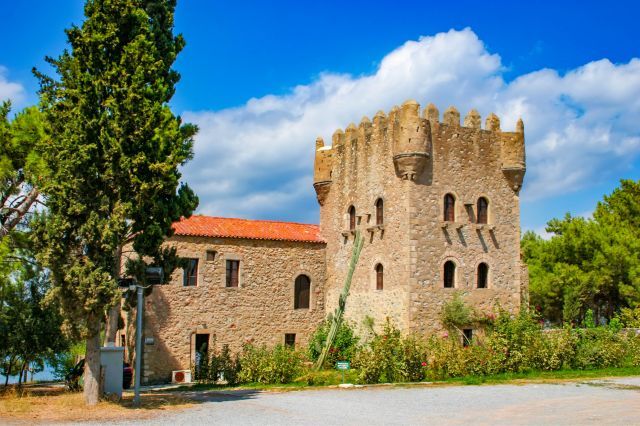Gythio Sights & Attractions



Gythio is a seaside town on the south of Peloponnese. It is the capital of Mani, a mountainous and barren area known for its brave fighters during the Greek War of Independence. Many sandy beaches and interesting sites surround this lovely town. Mavrovouni is the most famous beach of Gythio, while very nice beaches are also Selinitsa and Ageranos. A short walk from the port of Gythio leads to the islet of Kranae where is the Historical Museum. In short drive from Gythio are nice places, such as the Caves of Diros, the town of Areopolis and the fishing village of Gerolimenas.
You can see below the best Sites in Gythio. You can filter them by category and location.

Historical Museum
MuseumsThe Historical and Ethnological Museum of Mani is housed in Tzanetakis Tower on Kranae islet. The exhibits of the museum inform us about the long history and tradition of Mani. The tower has three floors and the first one hosts the observations of some Western travelers on Mani.

Shipwreck
OtherDimitrios (Greek Δημήτριος) is a Greek shipwreck famous due to its picturesque location on an easily accessible sandy beach near Gythio, Greece.

Lighthouse
LighthousesThe historical lighthouse of Gythio is located at the edge of Kranae islet, which is connected to the mainland through a pathway.

Our selection of Best Hotels

Ancient Theatre
Ancient SitesLocated on a hill above the town, the ancient theatre of Gythio was originally built in the Roman times. In summer, it hosts many cultural events and festivals.

Tzanetakis Tower
OtherThe Tower of Tzanetakis in Gythio is a characteristic example of the towers of Mani. This impressive and well-preserved construction is actually placed in the center of Kranae islet.

Church of Agios Petros
ChurchesThe most famous church in Gythio is Agios Petros, right in front of the harbor, on the islet Kranae. This island is connected to the mainland by a narrow pathway.

Book your car from Athens
Our car rental service is rated . Read reviews.

Church of Agia Varvara
ChurchesThe small church of Agia Varvara stands right on the beach. Made of stone in the Medieval times, this small church seems rather abandoned today.
Archaeological Museum
MuseumsThe Archaeological Museum of Gythio is currently placed in the old building of Parthenagogeio. Some of its main exhibits are graven inscriptions belonging to the archaic period, ceramic statues from the Roman age and other findings that show the commercial power of Gythio in ancient times.



